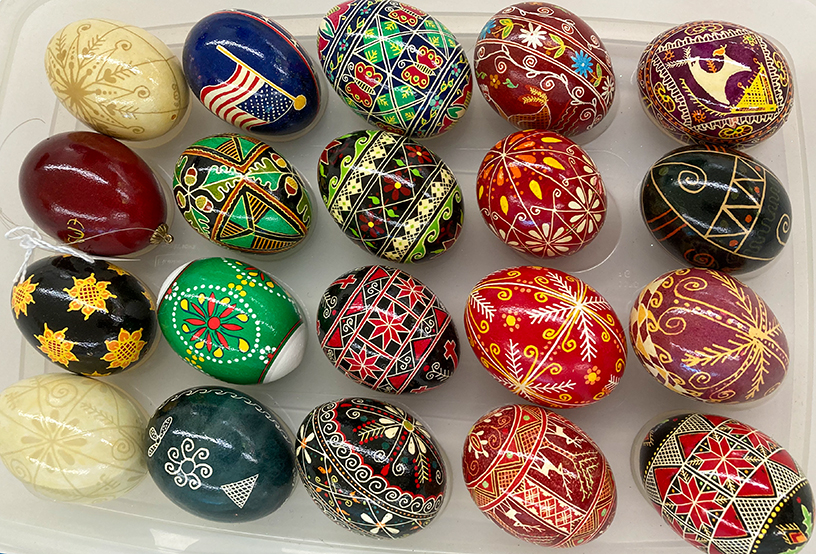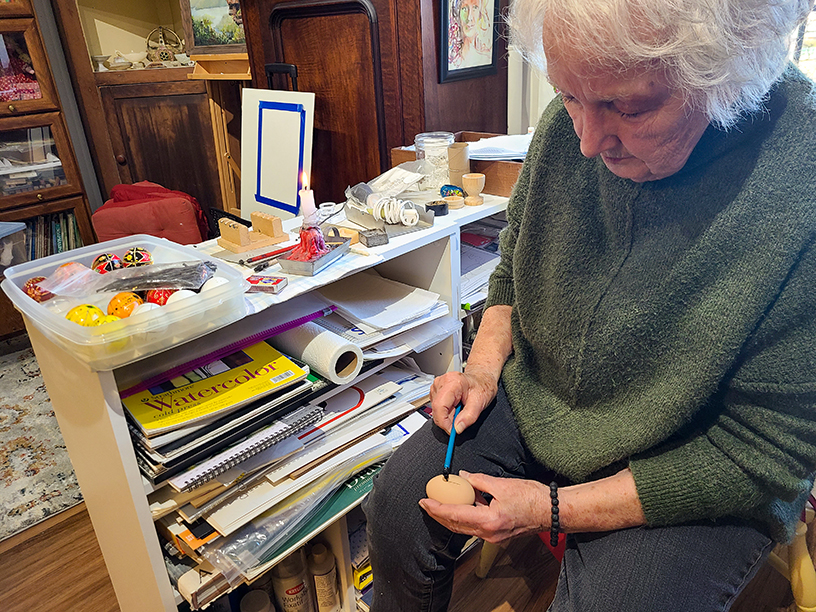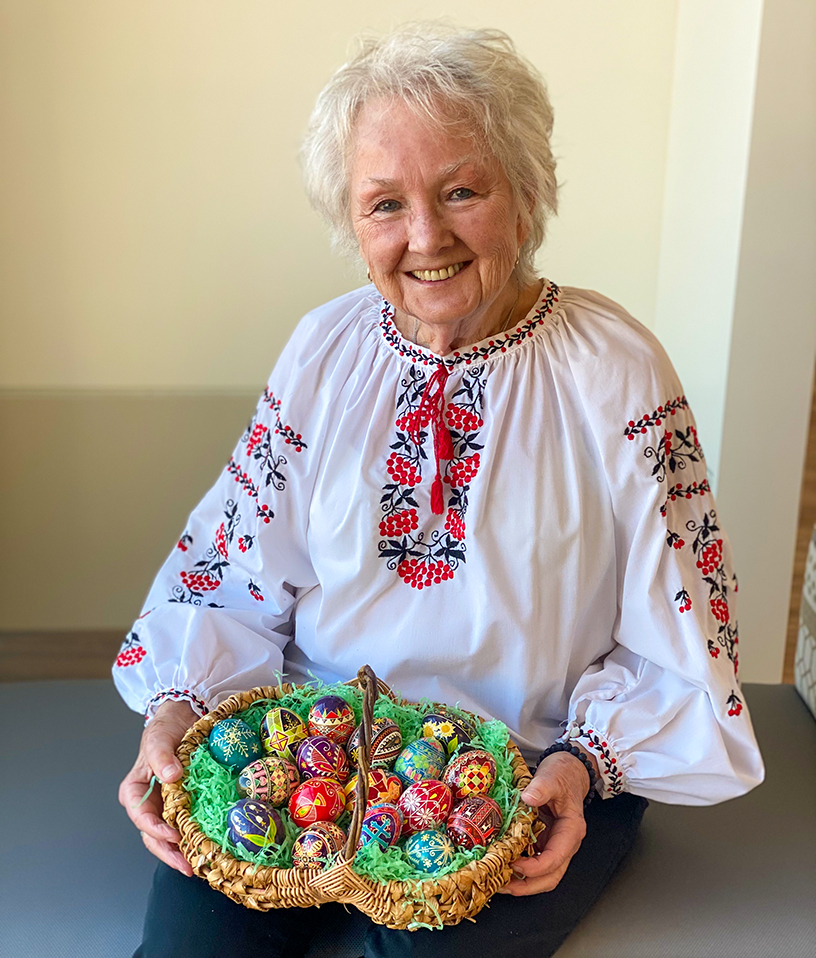The Art of Pysanka Easter Eggs
Villager Edna Stinefelt is well known in our community for her artistic skills. She is one of the most faithful regulars in our new Art Education Studio, always willing to help another villager finetune a skill… or to add a new one to her own impressive repertoire. One of Edna’s specialty is an ancient folk artform from Ukraine. There is a long tradition of ornamented Easter eggs in Eastern Europe, symbolizing fertility, an abundant harvest in the season ahead, and also meant to ward off evil. This tradition culminated with the bejeweled eggs made by Fabergé for the Russian tsars. Less well known but equally spectacular, Pysanka egg decorating involves painstaking steps. The step that makes it Pysanka is writing on the shell of the egg with melted hot wax.

Edna Stinefelt has lovingly indulged in this medium for more than 20 years and has made over 200 eggs to date. “You put your heart and soul into it,” says Edna. “They become a part of you.” Although she has sold many at folk festivals over the years, her apartment’s multipurpose room is still filled with boxes of Pysanka eggs (but not stored in cartons, as you might expect). Always generous with her art, Edna is planning to display some of her eggs in the Harmony Ridge showcase during the month of April.

The Pysanka craft involves a kistka tool, which is a stylus with a tiny reservoir that holds melted beeswax. With this tool, Edna writes on the shell of a raw egg, creating a decorative design. As it cools, the wax turns into a waterproof shell. The next step is a water-based dye bath, which colors the exposed areas of the shell, but not the areas covered by the cooled wax. The process is repeated for each element of the intricate design and each hue of dye (starting from the lightest color and ending with the darkest). After drying, the wax is then softened again by the flame of a candle and rubbed away gently with a tissue. Once the decorating is complete, a coat of polyurethane – or clear nail polish – is used to protect the intricate design. After this seal is dry, Edna carefully pokes a hole into the bottom of the egg using a straight pin, then uses an egg blower to push air into the egg, allowing it to drain. The entire process can take up to several days.

Edna learned this beautiful craft from a friend in an art group in this country. However, when we asked her about her family history we discovered another link. Her father, a first-generation immigrant to the US, was born in Poland, in an area that is part of today’s Ukraine. The complex history of that region is reflected by the fact that on Edna’s birth certificate, when she was born in Baltimore, her father’s place of birth was listed as Russia. Hearing about this connection, at a time when the very existence of Ukraine is, once more, threatened by its larger neighbor, makes us appreciate Edna’s effort to maintain the Pysanka tradition all the more. We trust that displaying Edna’s authentic designs will bring peace, health and good luck to our community.

